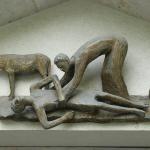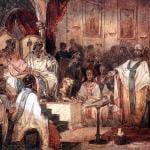Denver, Colo., Jun 25, 2015 / 04:02 am (CNA/EWTN News).- A few months ago, several writers opened up a conversation they felt was long overdue in a book titled “Selfish, Shallow, and Self-Absorbed: Sixteen Writers on the Decision to Not Have Kids.” The tongue-in-cheek title is an attempt to reclaim some of the stereotypes typically placed on adults who have made the decision to not have kids. The “whys” of the childless lives of the sixteen authors varied from people who chose to never have children, to people for whom circumstances were never right for children, to people who had miscarriages or abortions and never had other children. But the online conversation surrounding the book largely left out the dark side of the story – a chosen childless life, in the context of a sexual relationship, almost always necessitates physical harm against women: either through long-term birth control use, or through abortion. It is very rarely the carefree lifestyle it can appear to be in the media, critics say. “One of the things that perhaps we don't consider in the choice to remain childless, is the toll that repeated abortions can have on a woman's body and her spirit,” Vicki Thorn told CNA. Thorn is the founder of the National Office for Post Abortion Reconciliation and Healing, and of Project Rachel. She is also a corresponding member of the Pontifical Academy for Life and a mother of six. “If it is the case of long term contraceptive usage, there are health issues that are very real and put her at risk for depression, blood clots and strokes, breast cancer, lost libido and other health issues. Even when the choice for childlessness is made, there are often many 'what-if's' that may come back time and again,” she said. Thorn is among an increasing number who claim that science is backing up how abortion and contraception are largely destructive to women – both of which are essential to maintain a childfree life.Birth control and a false sense of security Many of the authors in the book, like many childless Americans, are nonetheless married or in a committed relationship. And studies show most people in a sexual relationships use some form of contraception to avoid unwanted pregnancies. According to CDC data from 2011-2013, published in Dec. 2014, 61.7 percent of the 60.9 million women aged 15-44 in the United States were currently using contraception. The most common contraceptive method was the pill, followed by female sterilization and then some forms of long-acting, reversible contraceptives. But when the goal is to avoid children altogether, what happens if and when these contraceptives fail? “Everything has a failure rate,” said Abby Sinnet, a nurse practitioner at Bella, a Denver-based natural-care women's OB/GYN clinic. “You look at sterilization where somebody gets their tubes tied, and that's a 98 percent success rate, but there’s still that two percent that it could fail.” Less drastic methods of contraception have even higher failure rates with imperfect use, according to data from the Association of Reproductive Health Professionals (ARHP) reported on Business Insider in April 2014. Notably, the study also shows that the onus of birth control falls on women, with male sterilization accounting for only five percent. According to the ARHP data, the pill, over time and with imperfect use, has a 91 percent success rate, while various unspecified ovulation tracking methods have a typical use effectiveness rate of 75 percent. Essure, a kind of permanent birth control which seals off a woman's tubes with metal coils, has a typical effectiveness rate of 75-96 percent, according to a study by the Yale School of Medicine. It's difficult to tell with certainty the difference between a failure – a couple conceiving when they didn't want to – and a drop-off, or a couple that chooses to stop using contraception in order to conceive, or who are complacent about whether or not they want to conceive and so are less vigilant about their method's use. But nevertheless, the chance that most methods of birth control will fail at some point is real. “Whether it's natural family planning or it's a birth control pill or a sterilization, there's always that room for something bigger,” Sinnet said. The idea of wanting some control over one's fertility is understandable, Sinnet said, especially in a world that in many ways can seem so out of control. But at what cost? Hormonal birth control pills, the most popular form of birth control, is a known class one carcinogen. A recent study out of UCLA this year also found that the pill may be shrinking parts of women's brains and making them more masculine. Several studies suggest that hormonal birth control pills skew the way women choose partners, and can make them choose less genetically compatible ones. Other women who opt for more permanent forms of birth control, such as IUDs or Essure coils, may experience organ perforation or device migration among other complications. According to Sinnet, the physicians and nurses at Bella propose that the knowledge women gain about their bodies through natural family planning methods is far more empowering than popping pills or getting implants and hoping for the best. “If you look at it from a more natural side of things, how freeing is it for a woman to know her body so well, and to be in such control of her fertility because she knows the ebbs and the flows that it naturally does?” Sinnet said. “She knows at this time I'm fertile, so I'm not going to come together because I don't want to have a baby, or maybe I do want to come together because I do want to have a baby, and that is truly freeing and that is truly having control.” Besides offering a sometimes false sense of control over their fertility, using artificial contraceptives can close off certain emotional aspects of a relationship, Amanda Teixeira told CNA. Teixeira is a missionary with the Fellowship of Catholic University Students who blogs about her and her husband's struggles with infertility and natural family planning, as well as their adoption of their daughter Josie. “With my husband and I, we are infertile, but just by our very act of being open…with our sexual life opens different emotions, and you just think about it differently,” she said. “I think these couples (choosing to be childless) are missing out on experiencing the other person in the fullness that they are. They're missing out on a deeper component of sexuality that they don't even know they're missing.” Abortion: Necessary for choosing childlessness For couples for whom a pregnancy is an unexpected and unwelcome surprise, abortion may and often does seem like the obvious and easy answer to the problem. But abortion, for most women, wreaks havoc on their psychological and physical lives. In her experience working with post-abortive women, Thorn said she has found the portrayal of abortion by the mainstream media as a routine, medical procedure to be false. “These are not non-events. This is always a mother who has lost a pregnancy in an unnatural and traumatic fashion,” Thorn told CNA. “Pregnancies aren't supposed to end that way.” “The problem is that we don’t really understand how complex pregnancy is on a pure biological level,” Thorn added. “Once I'm pregnant, I carry cells from those children for the rest of my life, and in fact, if I have a miscarriage or an abortion, I carry more cells from those children than the children I gave birth to, so there’s a biological connection that remains.” The phenomena of women retaining the cells of their children for decades after birth is known in the medical community as microchimerism. According to a 2014 study on microchimerism by the “International Journal of Epidemiology” reported in the Atlantic, this retaining of cells may give women numerous health benefits, including a decreased risk of cancer and Alzheimer's disease, as well as a boosted immune system. This deep biological connection that remains for years may be part of the reason that women find themselves grieving over abortions even years after they've occurred, Thorn said. “It is a false sense of freedom to choose abortion,” she said. “Because you are biologically, not to mention spiritually and psychologically, changed by the experience.” According to a 2011 analysis published in the British Journal of Psychiatry, post-abortive women were at an 81 percent increased risk of mental health problems, with nearly 10 percent of those psychological problems – such as anxiety, depression, and suicidal behavior – directly attributable to abortion. On the other hand, while abortion is sometimes justified on the basis of mental health, a 2013 study found that the termination of unintended pregnancies had no therapeutic psychological benefit. There are also numerous physical side effects of abortion, most notably the increased risk of complications should the woman become pregnant again. A woman who has chosen the childless life may then face significant pressure to abort a child and subject herself to these possible negative side effects. One of the authors in “Selfish, Shallow, and Self-absorbed” speaks of this pressure when she, a budding young writer, found herself pregnant with a man in what she considered a “decent enough” relationship. “When I called to tell my mother I was pregnant, she said, 'You have a very special talent, Pam, and if you decide to have that baby, you are going to become perfectly ordinary like everyone else,'” Houston wrote. “(C)ontrary to the belief of some outspoken congressmen, no woman ever wants to have an abortion. I have never met one who takes it lightly, who hasn't thought about the abortion with if not some version of regret, at least with some sadness for the rest of her life.” In her remarks to CNA, Teixeira emphasized that parenthood is not necessarily for everyone. “Becoming a parent is a calling, and there are probably people out there who…maybe they're emotionally not capable of ever loving or raising a child well, and to be wise about that is prudent,” she said. “But I think it would be rare for a married couple to ever be called to not have children if they could.” For those who have chosen childlessness in the context of a sexual relationship, Teixeira said it seems “there's a disconnect there, ultimately they've decided to separate sex from babies, and I can't see how the two are separated.” “And as somebody who cannot have children, to watch somebody who maybe could, but chooses not to, I would just plead with them that they might be missing out on the greatest adventure of their life.” Read more
















